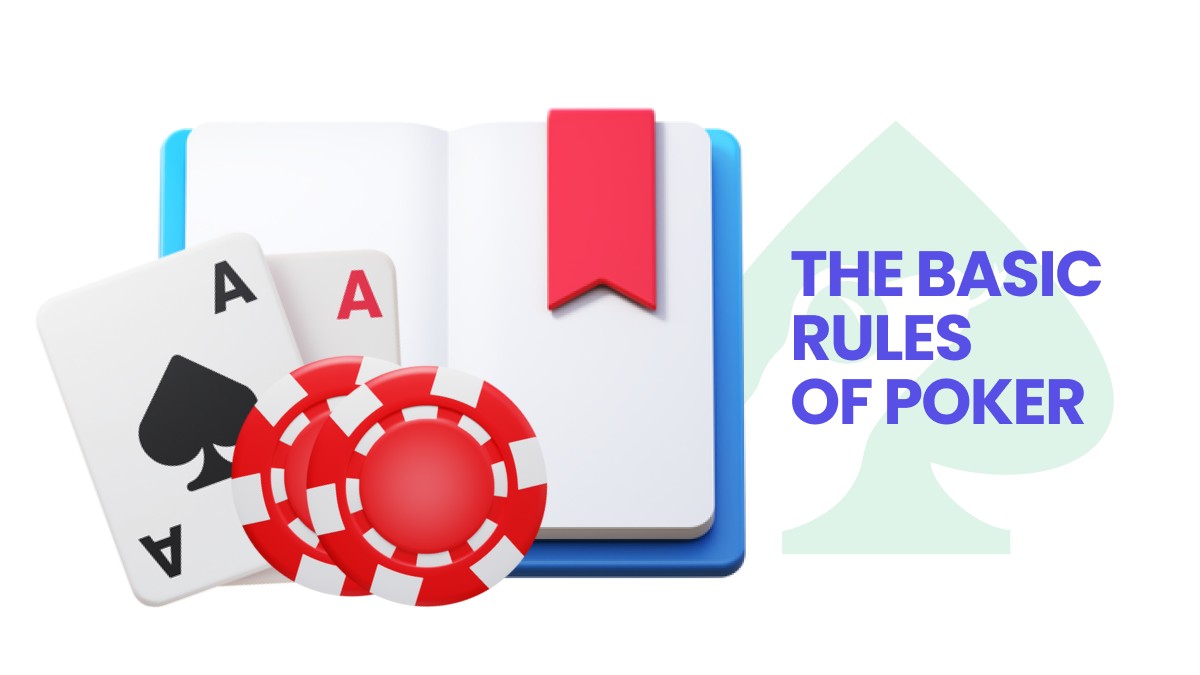How to Play Poker
Poker is a card game where players bet on having the best hand to win the round. The rules of poker can vary slightly, but the basics involve dealing cards, placing bets, and making decisions based on the cards and your opponents’ behaviour. The winner of a poker game is either the one with the strongest hand or the last player left after a round of betting. Poker is a popular game and can be played at physical or online casinos. In this article, we’ll walk you through the rules and how to play poker.
Basic Rules of Poker
Poker is typically played with a deck of 52 cards, and players place their bets into a shared pot in the middle of the table. Each player is dealt a number of cards, depending on the type of poker being played. In some versions, the cards are hidden, while in others, they’re visible to all players.
After each round of dealing and betting, players can either bet, raise, or fold. This continues until all players agree to reveal their cards or have left the round.
Once all bets are placed, and no one is willing to raise further, players reveal their hands, and the player with the strongest combination wins the pot, which includes all the bets made during the round. We’ll cover the ranking of poker hands later in the article.
There are many variations of poker, such as Texas Hold’em, Omaha, and Seven-Card Stud, and while the rules may differ slightly between them, the core idea is the same: deal cards, place bets, and make decisions based on the cards and how your opponents are playing. The winner is the player with the best hand or the last player left after a round of betting.
Poker Hand Rankings
In poker, the term “hand” refers to the cards a player holds. There are ten different hands, ranked from lowest to highest in value. Here’s a list of the ten hands, ranked in order:
- High Card: When a player doesn’t have any combinations, the highest card determines the value of the hand.
- One Pair: Two cards of the same value.
- Two Pair: Two sets of two cards with the same value.
- Three of a Kind: Three cards of the same value.
- Straight: Five cards in a sequence, regardless of suit.
- Flush: Five cards of the same suit.
- Full House: Three cards of one value and a pair of another value.
- Four of a Kind: Four cards of the same value.
- Straight Flush: Five cards in sequence and of the same suit.
- Royal Flush: The five highest cards (10, J, Q, K, A) of the same suit.
If two players have the same hand, the player with the highest card wins.
Player Actions
In poker, players can make different moves throughout the game. Here are the key actions:
- Check: A player chooses not to bet but stays in the game, indicating they don’t want to raise the stakes.
- Bet: The player places a wager, and other players must match it to continue.
- Fold: The player exits the game and forfeits any chance of winning the pot.
- Call: The player matches the previous bet to stay in the game.
- Raise: The player increases the previous bet, and others must match this new amount to remain in the game.
Betting Rounds
Betting rounds in poker are the phases where players can bet or raise to move closer to winning the round. The number of betting rounds depends on the game being played, but most poker variants have at least one.
In most types of poker, there are four main betting rounds:
- Pre-flop: Players place blinds, which are required bets to start the game. After that, they can check, bet, call, fold, or raise.
- Flop: The dealer places three face-up cards on the table, and the next player can check, bet, call, fold, or raise.
- Turn: A fourth face-up card is placed on the table, and players can make further bets.
- River: The fifth and final community card is placed on the table. Players can make their final bets in this round.
Betting Limits
Betting limits in poker refer to the maximum amount a player can wager or raise during a round. The limits depend on the version of the game being played.
There are three common types of betting limits in poker:
- No Limit: Players can bet all their chips at any point in the game.
- Pot Limit: Players can only bet up to the total amount already in the pot.
- Fixed Limit: There is a set maximum bet, and players can only wager specific amounts.
Blinds
Blinds are mandatory bets that keep the game going by ensuring there’s always something to play for. There are two types of blinds: the small blind and the big blind. These are typically placed by the two players to the left of the dealer before the game begins.
- Small Blind: Usually half the size of the big blind, placed by the player immediately to the left of the dealer.
- Big Blind: The minimum bet on the table, placed by the player two seats to the left of the dealer.
Betting limits usually stay the same throughout the game, making sure there’s always a reason to stay in the round.
Different Types of Poker – Rules Explained
There are various types of poker games, so you can pick the version that suits your taste best. Here, we briefly explain the rules for each type.
Texas Hold’em Poker Rules
Texas Hold’em is one of the most popular poker variants. Each player gets two cards, and there are five community cards that everyone can use to form the best five-card hand. The player with the strongest hand wins the round.
Omaha Poker Rules
Omaha is another version of Hold’em where each player gets four cards, and there are five community cards. Players must use exactly two of their own cards and three of the community cards to form the best five-card hand.
5 Card Draw Rules
5 Card Draw is a simple form of poker. Each player is dealt five cards, and they can choose to exchange some or all of their cards to try to improve their hand. The player with the best hand after the exchange wins the round.
5 Card Stud Rules
5 Card Stud is a more traditional form of poker. Each player is dealt five cards, with four visible to everyone and one that only the player can see. The player with the strongest hand after the final round of betting wins the round.
7 Card Stud Rules
7 Card Stud is another traditional poker variant. Players receive seven cards, four of which are visible to others. Players use these seven cards to make their best five-card hand, and the player with the strongest hand wins the pot.
Conclusion
We hope this article has provided you with a clear overview of the different poker rules. With this knowledge in hand, you’re now more prepared to give poker a try. Good luck!









